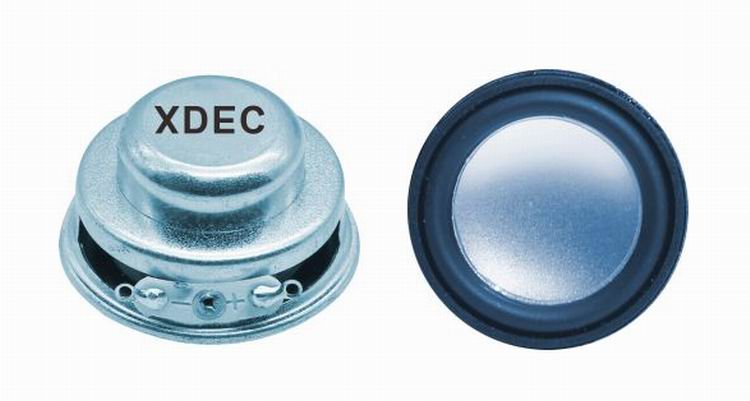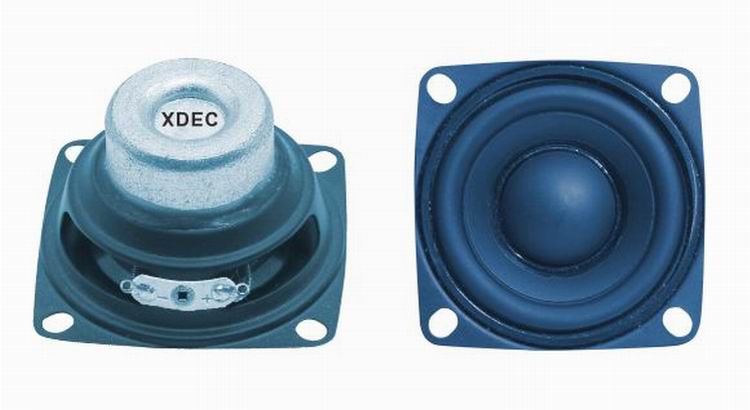Japanese will not exit the TV market in the short term
Sharp, Sony, and Panasonic have finally got a respite from the loss record in recent years.
Recently, the above-mentioned Japanese companies released the latest financial reports, which showed that their plight has been slightly alleviated. In the third quarter ended December 31, 2012, Sharp's net loss was 36.7 billion yen, compared with a net loss of 174 billion yen for the same period last year. Panasonic successfully achieved a turnaround. Revenue of 1.8 trillion yen, net profit from the previous year's loss of 198 billion yen to a profit of 61 billion yen. Industry experts attributed this to the devaluation of the Japanese yen that led to the increase in the overseas performance of Japanese companies.
However, Japanese color TV companies still did not emerge from the quagmire of losses. It is understood that Sharp's net loss in the first three quarters of 2012 was still as high as 424.347 billion yen. Matsushita did not make any changes to its forecast of a loss of 765 billion yen for the entire fiscal year. The dilemma of Japanese TV companies is evident.
Accompanied by the continuous loss of Japanese TV companies, and two years ago, Hitachi gave up the successful transformation of the color TV business, there is a voice in the industry that Japan may abandon the color TV business in the future.
However, home appliance industry observer Lu Renbo believes that Japanese companies should not give up the color TV business in the short term. In addition, “thinned dead camels are better than Ma Daâ€. Although Japanese color TV companies have been stuck in a loss-making quagmire in recent years, they are still superior to China’s color TV sets in terms of industrial structure, core technology, and brand influence. TVs still occupy a large market share in the global TV market.
In the past ten years, it can be said that the replacement of a color TV era, color TV from the CRT quickly to the flat-panel LCD color TV transition. More than a decade ago, Philips and Thomson, the TV's originator, and the Japanese TV brand dominated the global color TV industry. Today, Philips and Thomson TV have long disappeared into the long river of history. Philips sold the color TV business to TPV two years ago, retaining only the Philips TV brand. Thomson was unable to transition from CRT color TV to LCD color TV due to a dull response. As a result, he eventually lost money. In desperation, he officially waved goodbye to TV manufacturers in 2010.
Today, Japanese TV companies seem to be walking the old path of Thomson. In the past two years, color TV industry once again ushered in a leap-style change - intelligence. It is puzzling that in the stage of intelligentization of color TVs, the response of Japanese color TV companies to the market has become very sluggish. Appliance analyst Liang Zhenpeng told reporters that compared to Chinese and South Korean TV companies, the time for Japanese TV companies to enter smart TVs is one year at a time. Even more lethal is that Japanese TV companies seem to have a poor attitude towards smart TVs. At the 2013 International Consumer Electronics Show (CES), Japanese color TV companies continued to introduce hardware and screen innovations, while software innovation and color TV intelligentization remained stagnant.
Korea will continue to grasp the industrial initiative in the future
In terms of color TV, whether it is market share or product price advantage, South Korean TV companies have already surpassed Japan, South Korea has become the dominant color TV.
According to statistics, in 2012 Samsung TV shipments reached 51,300, while LG TV shipments totaled 29.99 million. The combined market share of the two exceeds 40%; China's color TV sets have a total global sales volume of approximately 57 million units, accounting for approximately 28% of the total market; Japan's color TV sets have global sales of approximately 45 million units, accounting for approximately 23% of the market.
The rise of the Korean TV series is in fact based on the decline of color TV sets in Europe and the United States and Japan. Industry experts attributed the rise of South Korea’s Samsung and LG TVs to rapid market response.
The rapid layout of the industrial chain is one of the reasons why South Korean TV companies have gradually surpassed Japanese TV companies, and the gap is still widening. Liang Zhenpeng said that the Korean TV companies' upstream industrial chain, whether they are LCD panels, plasma panels, or OLED panels that have received much attention in the past two years, have significantly exceeded the patents, product development, and upstream industrial resources of Japanese TV companies. .
In addition, the emphasis on R&D and innovation has also enabled Korean TV companies to widen the gap with Japanese color TV companies. It is understood that in 2012 Samsung Electronics Co., Ltd. reduced the scale of equipment investment for two consecutive quarters, but did not reduce the R&D expenses. In 2012, R&D expenditure was as high as 12 trillion won (about 10.98 billion US dollars). However, Apple's R&D expenses in FY2012 was only US$3.4 billion. It can be seen that the success of Samsung TV is not accidental.
Insiders pointed out that the Samsung TV stands in the top spot in the world, and the most critical thing behind it is innovation. This is not limited to technological innovation, but also management and business strategy innovation. From the product point of view, whether it is in the color TV or mobile phone, Samsung often adopts the full-fledged play style of “high-end, middle-end, and low-endâ€, which is an innovation of business strategy.
Some experts believe that the success of South Korea's color TV can not be separated from the entire South Korean support. Home appliance industry observer Hong Shibin said in an interview with reporters that Korean TV sets and Japanese TV sets are like a fist and a palm. South Korea is taking the national power to develop Samsung and LG, while Japan has Sharp, Sony, Panasonic, Toshiba, Hitachi and many other brands, all of which are prominent companies in the field of black electronics.
Diversification of industrial structure is also a major advantage of Korean TV companies. South Korean color TV companies are often not limited to the color TV field. Their smart products such as mobile phones and tablet PCs and white goods such as refrigerators are all excellent. They are built around their own brands. Sharp, Matsushita and other companies in Japan are walking on a single leg and are in the dark. In this way, once a strong competitor is encountered, it may face a complete collapse of the entire enterprise and fail to realize the sound development of an industry.
China's color TV has overtaken Japan in full scale in the decade
At the end of last year, TCL, a domestic color TV company, announced in Beijing that it had officially exceeded 15 million units of global flat-panel TV shipments in 2012. This is the first time that China's color TV companies have exceeded the 15 million-year mark in global shipments. Data shows that in 2012, there were only three global TV companies with annual sales of more than 15 million units: Samsung, LG, and TCL. Experts said that while the world's color TV layout is shifting toward China, the new "wild goose pattern" of the domestic color TV industry is also being formed.
It is understood that so far, China's color TV companies capable of independently producing large-size upstream LCD panels are only TCL. Other companies are more passively buying LCD panels from Japan and South Korea, and then performing subsequent color TV assembly and processing. Liang Zhenpeng pointed out that the key to China's color TV out of China to the world lies in the integrity of the industrial chain. Only companies with their own upstream LCD panels and component production lines can get rid of passive competition.
At present, China's color TV industry chain is gradually improving, and the upstream LCD panel production line has gradually emerged. It has successfully broken through the monopoly of LCD panels in Japan and South Korea. In recent years, BOE, China Star Optoelectronics, and China National Electric Panda Co., Ltd. have continued to carry out the Maigao generation panel production line, and domestic large-size panels have made a qualitative breakthrough. Among them, the subsidiaries of China Electronics and Information Industry Group, such as China National Electric Panda Co., Ltd., jointly funded the establishment of a joint venture company. The construction of the 10th generation TFT-LCD production line in Nanjing is expected to capture the new pattern of the flat panel display industry in the future.
As early as in 2009, TCL spent 24.5 billion yuan to build an 8.5 generation LCD panel production line. It can be said that China's color TV companies have taken the first step toward upstream manufacturing. The commissioning of the TCL LCD panel also marked the gradual improvement of the upstream and downstream LCD color TV industry chains by domestic color TV companies. Hong Shibin said that this is worthy of recognition. If domestic color TV companies do not invest in building LCD panel production lines, Japan and South Korea’s monopoly on LCD panels will never be broken.
Hong Shibin believes that the price advantage can be said that China's color TV is currently the biggest advantage. In addition, another advantage of China Color TV is to have a "position" - the Chinese market. China's color TV companies can play well in the war of war. As long as they can do a good job in the Chinese market, they will be able to base themselves on international competition. Although China's color TV companies still have a certain gap in technology compared with Japan and South Korea, relying on the Chinese market still allows Chinese brands to stand on the shoulders of giants.
"In the next decade, China's color TV sets still have a great chance of catching up with Japanese TV sets." Industry experts generally believe that. In January of the past, TCL became the first Chinese company to ship more than 2 million units a month, which seems to confirm this statement. The industrial chain of Chinese enterprises has gradually improved, the market has made up for shortcomings in technology, has low-cost advantages, and relied on the majority of markets. As China's color TV companies continue to move forward, Japanese household electrical appliance companies have fallen into a loss-making quagmire, and China’s color TVs will fully catch up in the next decade. Super Japanese TV will become possible.
Robot speaker is a kind of speaker unit which is used for multimedia devices. Multimedia Speakers have loud sound, wide frequency response range and rich bass.
Our main multimedia speakers are full ranges speakers units:
1) From the diameter: we have speakers in 1" ~ 3".
2) From the power output, we have speakers of 2W ~ 15W.


FAQ
Q1. What is the MOQ?
XDEC: 2000pcs for one model.
Q2. What is the delivery lead time?
XDEC: 20 days for normal orders, 15 days for urgent orders.
Q3. What are the payment methods?
XDEC: T/T, PayPal, Western Union, Money Gram.
Q4. Can you offer samples for testing?
XDEC: Yes, we offer free samples.
Q5. How soon can you send samples?
XDEC: We can send samples in 3-5 days.
Robot Speaker
Robot Speaker ,Bluetooth Robot Speaker,Smart Robot Speaker,Mini Robot Speaker
Shenzhen Xuanda Electronics Co., Ltd. , https://www.xdecspeaker.com